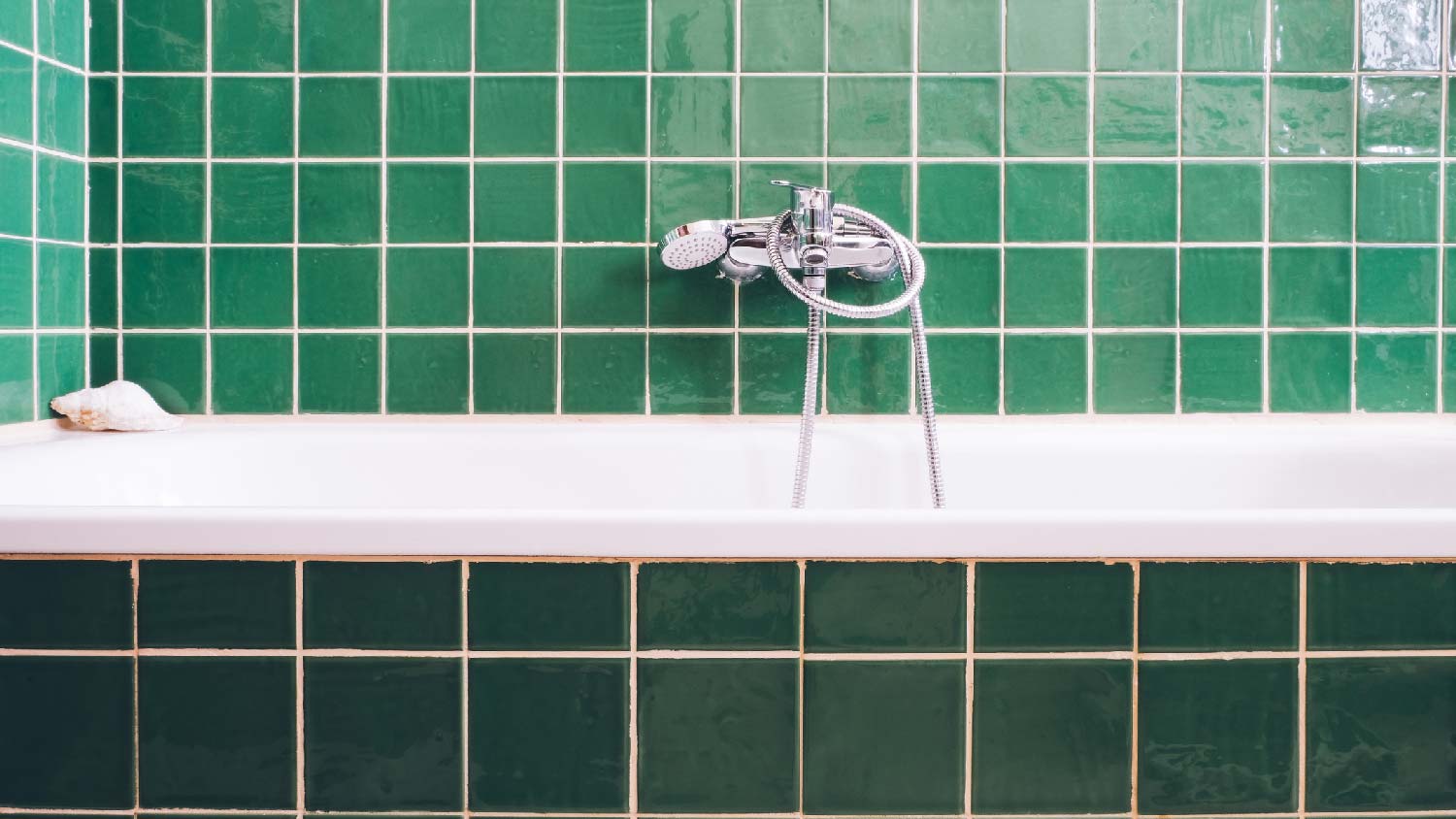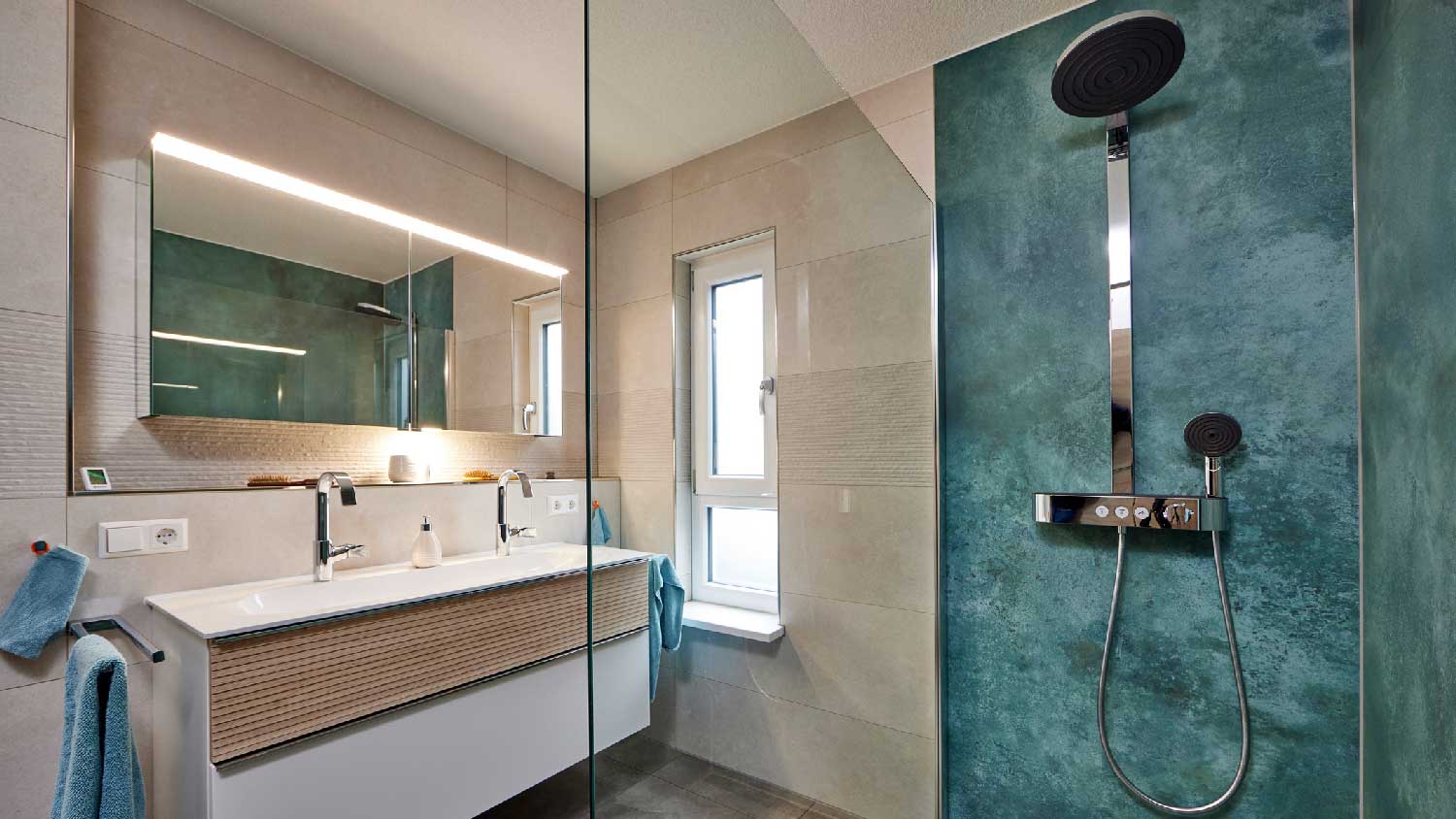
For a bathroom remodel, touch-up, or home perimeter, caulking is worth the investment. Find out average costs for window caulking, shower caulking, and more.
With all the options, choosing a bathroom faucet is anything but rinse and repeat


Where there is a bathtub or shower, there is a faucet—and there are a surprising number on the market. Luckily, it is not too difficult to choose the right model, as long as you know what to look for. Though style and finish may differ, certain bathtub faucet types work better with different types of bathtubs. The same goes for shower faucets. This guide will tell you everything you need to know.
A local faucet installation company can help you choose the best bathtub faucet for your space, but you will generally choose from four main types.

Deck mount faucets are typically installed on the rim of the bathtub, known as the deck. In this case, your bathtub will have predrilled holes that make installation easy. You can also install a deck mount faucet on the ledge of a drop-in bathtub surround. Just make sure the spout is long enough to reach the tub basin.
This bathtub faucet type is popular because it has a streamlined look. You can choose a wide-set or center-set faucet, depending on the tub design. Either way, there will not be any exposed piping; the only visible part is the spout, handles, and, in certain upgraded models, a hand faucet.
| Pros | Cons |
|---|---|
| Tubs often come with predrilled holes for easy installation | Not suitable for all bathroom layouts |
| Lots of finish and design options | Faucet takes up ledge space |
| No exposed piping | May or may not come with a hand faucet |
Best for: Drop-in bathtubs or tubs with predrilled holes for deck mount faucets
Tub wall mount faucets attach through the wall of your bathtub. Generally, homeowners will use this type of faucet if their bathtub has predrilled holes in the tub wall. This faucet works in all different types of bathtubs, such as alcove tubs, drop-in tubs, and freestanding tubs. Like deck mount faucets, it provides a streamlined look. That said, depending on the layout, there will be some exposed piping on freestanding tubs.
| Pros | Cons |
|---|---|
| Works with a variety of bathtub types | May be difficult to conceal piping on a freestanding tub |
| Typically has a clean, streamlined look | Requires precise measurements |
| Can come with handheld sprayer | Tubs may not come with installation holes |
Best for: Bathtubs with predrilled holes for tub wall mount faucets

Wall mount faucets are attached to a wall next to a tub. The piping is concealed within the wall, while the spout and handles are exposed on the wall. This tub requires two things—a nearby wall and a spout that is long enough to reach from the wall to the tub basin. For this reason, this type of bathtub faucet is most commonly used with alcove tubs.
| Pros | Cons |
|---|---|
| No exposed piping | Requires a wall near the tub for installation |
| Great for alcove bathtubs | Not suitable for freestanding bathtubs |
| Can save space | Installation is trickier than other faucet types |
Best for: Alcove bathtubs, bathtubs very close to a wall
Freestanding faucets are an ideal solution for freestanding (or standalone) tubs that lack predrilled holes. This type of faucet is mounted on the floor with exposed piping that comes up and over your bathtub. Since it is not attached to the tub, you have the flexibility to install the faucet where it works best. You will typically find these on clawfoot tubs, pedestal tubs, and soaking tubs.
Like other types of bathtub faucets, there are a ton of different styles to choose from. Vintage-inspired models work best with clawfoot tubs, while modern options give soaking tubs a minimalist look. To keep things cohesive, make sure you choose a faucet finish that matches your existing hardware and design aesthetic.
| Pros | Cons |
|---|---|
| Works well with freestanding tubs | Not suitable for alcove bathtubs |
| Hand shower often included | Exposed piping is not always visually appealing |
| Flexibility to place faucet in different positions around tub | Takes up floor space |
Best for: Freestanding tubs

There are two main shower faucet types—shower-only faucets and tub-and-shower faucet combos. The former is for standalone showers, while the latter is for tub-shower combinations.
A shower-only faucet consists of a showerhead and handle. It does not include a spout or handles for the bathtub. Homeowners use shower-only faucets for standalone showers, such as walk-in showers or shower stalls. If you also have a bathtub, it can be difficult to match the hardware and choose the separate components. That said, there are different types of showerheads with or without handheld sprayers, but you will need to mount them on the wall.
Best for: Walk-in showers and shower stalls
Tub-and-shower faucet combos are made to use alongside tub-shower combos. This type of faucet consists of a showerhead, handles, and a bathtub spout. The components can be mounted on the wall, the tub, or a combination of both. It depends on the design.
Tub-and-shower faucet combinations can be easier to install than shower-only models, since the parts are made to work together. A contractor who replaces faucets can help you pick the best option.
Best for: Tub-shower combos
When you are shopping for a new bathroom faucet, there are a few different things to keep in mind.
If you are replacing a bathroom faucet, choose the same type as your previous faucet to keep the installation simple. If you are starting from scratch, remember that some faucets are more difficult to install and may require you to open up walls and conceal piping. This can impact a budget.
You can typically choose between a single or double handle faucet for a bathtub. (Touchless faucets, which use a sensor rather than a handle, are reserved for sinks.) Some bathtub faucets have a third handle for a diverter. You may also want to consider choosing a faucet with a handheld sprayer. This upgrade is especially useful for families with pets and young children.
Diverts move the flow of water from the spout to a showerhead or handheld sprayer. Some faucets have a separate handle for the diverter, while others have a diverter on the spout.
There are many different types of materials and finishes. Higher-end materials will drive up the cost of your bathroom faucet, but they will also increase the lifespan (along with proper maintenance). Most bathroom faucets last 15 to 20 years, but high-end models can last up to 30 years.
As a general rule, choose materials and finishes that go with your existing hardware. If your sink has a shiny brass finish, it may look strange to have a bathtub faucet in brushed nickel. Consistency is always recommended.
From average costs to expert advice, get all the answers you need to get your job done.

For a bathroom remodel, touch-up, or home perimeter, caulking is worth the investment. Find out average costs for window caulking, shower caulking, and more.

If your bathroom vanity top is damaged or cracked, removing and installing a new one can be an easy project to tackle. Learn the cost of replacing your vanity top.

If your bathroom needs sprucing up, a new vanity will make a big difference. Vanity installation costs depend on the size and type of the countertops and fixtures you choose.

There are lots of different types of shower door seals to keep your bathroom dry. We’ll show you what they are and where they work best.

The chances of slipping and falling in the shower increase with age and limited mobility. Here are the types of shower grab bars and safety rails that can keep you safe.

Renovating your kitchen and want to know what the best tile for kitchen floor is? Our guide to the many types of kitchen floor tiles will help you make the best choice.